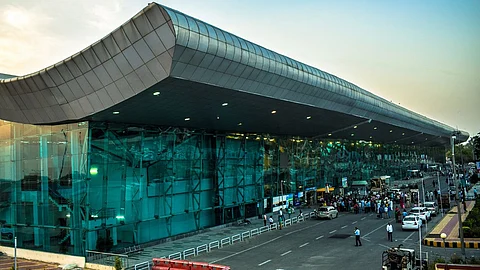

Punjab's air landscape is experiencing a sea change. The state has witnessed the emergence of top-notch international airports and sophisticated terminals over the years, while a few aging regional airports have fallen silent. Now, Punjab is at the crossroads—enjoying air connectivity in some places and waiting for a revival in others.
The state of Punjab's two busiest airports—Amritsar's Sri Guru Ram Das Jee International Airport and Chandigarh International Airport—are soaring high.
Amritsar Airport, which was constructed all the way back in 1949, now links Punjab to some of the world's cities—London, Dubai, Toronto, and Kuala Lumpur—credits to low-cost carriers like Air India Express, IndiGo, and SpiceJet.
With millions of travelers landing every year—most of them on pilgrimages or family visits—it's become a lifeline for the Punjabi diaspora.
Chandigarh Airport, which is situated in Mohali, serves the whole region encompassing Punjab, Haryana, and Himachal Pradesh. Since 2006, it has been operating both domestic and international flights, and even to Sharjah and Dubai. Its new, chic terminal is a reflection of Punjab's progress.
For decades, the industrial capital of Punjab, Ludhiana, was served by Sahnewal Airport. But with a short runway, few facilities, and dwindling airline interest, the airport became all but useless. No regular commercial flights have ever departed from Sahnewal since 2014.
Now there is a fresh ray of hope is the Halwara Airport, constructed on an erstwhile Indian Air Force station close to Ludhiana, is poised to step in. The new civil terminal is ready and will be opened by Prime Minister Narendra Modi on July 27, 2025. When flights start, Ludhiana shall at last be linked with cities such as Delhi and Mumbai.
Punjab boasts more airports—some new, some abandoned:
Adampur Airport (close to Jalandhar) is a combination of military and civil usage. Since 2023, it has resumed regular flights under the UDAN program, linking people to Delhi, Bengaluru, Kolkata, and so on.
Bathinda Airport, inaugurated in 2016 at an Air Force base, began with flights to Delhi and Jammu. But passenger shortages and airline withdrawals have suspended daily services.
Pathankot Airport, close to the border, was also briefly served by airlines. It now sits idle most of the time, sometimes handling special flights.
Smaller airports such as Patiala Airport are used primarily for training or charter services, not for everyday travel.
Experts indicate the greatest drawback of smaller airports is that they have low passenger demand. Airlines can't financially maintain flying almost empty planes. Some airports also have poor road connections, old terminals, or security constraints, particularly at military installations.
The state government has also asked the Centre to reopen these small airports under the UDAN scheme, which serves to connect unconnected areas. But people from the industry claim until there's consistent traffic, viable routes, and better infrastructure, these serene runways can remain that way.
With Halwara Airport soon to take flight, Ludhiana could soon have its long-wished-for wings. Meanwhile, Punjab keeps flying high through Amritsar and Chandigarh, both recording robust growth in domestic and international routes.
With air travel increasingly important for business, tourism, and personal journeys, Punjab's aviation sector is full of promise—albeit if done with vision and viability.
For flight schedules, flight information, or to provide feedback on services for regional air transport, go to the Airport Authority of India (AAI) website or your nearest airport terminal.